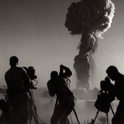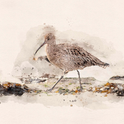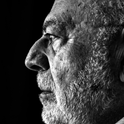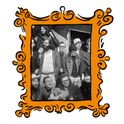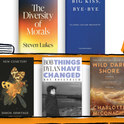Book: WB Yeats: A Life. Part II - The Arch-poet
Author: RF Foster
Price: (Oxford University Press, ?30)
Yeats remains a model for Irish writers - "even if," as John Banville writes, "many of us have sought to throw off his example, as one would throw off a smotheringly heavy cloak" - and countless other artists too. But what sort of model?
Two years after this volume opens, Yeats is 52, a famous writer and public man but an inexperienced bumbler in matters of the heart; he decides, in a characteristic mix of self-aggrandisement and whimsy, to marry Georgie Hyde Lees, whom he barely knows. "Friendly, servisable, & very able" is his (typically misspelled) judgement. A week before his wedding, however, he wonders if he should instead be marrying another woman, less than half his age, whom he continues to court during nuptial preparations. This girl is Iseult Gonne, daughter of Maud, Yeats's long-desired muse; Maud has already turned down several of the poet's proposals and inspired some of his most famous lyrics. Yeats gets through his wedding, then collapses, confining Georgie to a drab hotel for their (almost certainly unconsummated) honeymoon. Fortunately, however, his bride begins a week later to receive messages from supernatural spirits through trances of automatic writing. Yeats believes in and interrogates these powers, divining a vast historical-mythic order of cycles and phases of the moon. He recovers, writes poems again; his marriage - and sexual life - are saved.
The great poet's frailty and risible credulity in these weeks are not atypical. 1915-39, the years of this volume, hold Yeats's highest triumphs: poet of international fame, writing his best work; husband and father, senator, Nobel laureate. But they brim, too, with infidelities, dubious experiments, flirtations with extremism. Remarkable for his daring to be ridiculous, Yeats is even more remarkable for his ability to shape potentially ridiculous experience into verse of wisdom and astonishing art.
Previous biographies often followed their subject's lead, beginning with the themes of Yeats's writing. Roy Foster, by contrast, trusts to facts. His book starts with life, not work; it is a rich chronological record of just what Yeats the man did, and when, and how. In part, this is because Foster is a historian, not a literary critic (though his rare readings are graceful and trenchant). And as an Irish historian of the so-called "revisionist" strain, he is particularly concerned that factual accuracy should test received narratives. This means that Irish history should include more than the single "story" of liberation for a unified, oppressed Catholic people; more generally, that the irreducible specificity of historical scholarship should mottle the smooth perceptions people tend to hold about their past.
But Foster knows, too, that the need for stories and myths is itself part of the historian's purview, especially in Ireland. Yeats's seems just the life to consider if one wishes to honour, as Foster puts it in his most recent essay collection, "the mesh of nuance, complexity, and contradiction involved when the stories of nations intersect with those of supposedly emblematic individuals."
Foster's book is provocative merely by being comprehensive. For an "emblematic individual" of Yeats's power, "nuance and contradiction" never pull the rug out from under his own poses; rather, Foster's details prove the struggle - indeed the heroism - of Yeats's self-fashioning. "Hammer your thoughts into unity," the poet wrote in a 1919 essay. Foster shows how great a task that was: how, in the year of his great poem "Sailing to Byzantium," Yeats was managing several public committees (including one to choose Ireland's coinage), helping to run the Abbey Theatre, worrying about income, maintaining vast correspondence. "Unity" meant not a pared-down version of "thoughts," but a vigorous shaping and reshaping, a will to abstraction that never denied intransigent realities.
Yeats knew the difficulty of his work, its importance, its value. Yet Foster also demonstrates how the poet's elitism slid too easily into eugenic and proto-fascistic argument in the 1930s, and how Yeats's study and belief in occult magic were both an autodidact's university and a disinherited Irish Protestant's faith. While there is little analysis of verse in this volume, its contextualisation sent this reader back to the Collected Poems again and again. A single footnote offers half a dozen leads even for so familiar a title as "Among School Children"; and Foster calls deserved attention to such lesser-known works as "Solomon to Sheba," "Supernatural Songs," the final, great "Cuchulain Comforted."
"It seems to me that I have found what I wanted," Yeats wrote in a letter less than a month before his death. "When I try to put all into a phrase I say, 'Man can embody truth but he cannot know it.' I must embody it in the completion of my life." With this volume, Foster gives us the complete life of a great poet. And with it he offers a deeper, wider sense of that poet's truth.
